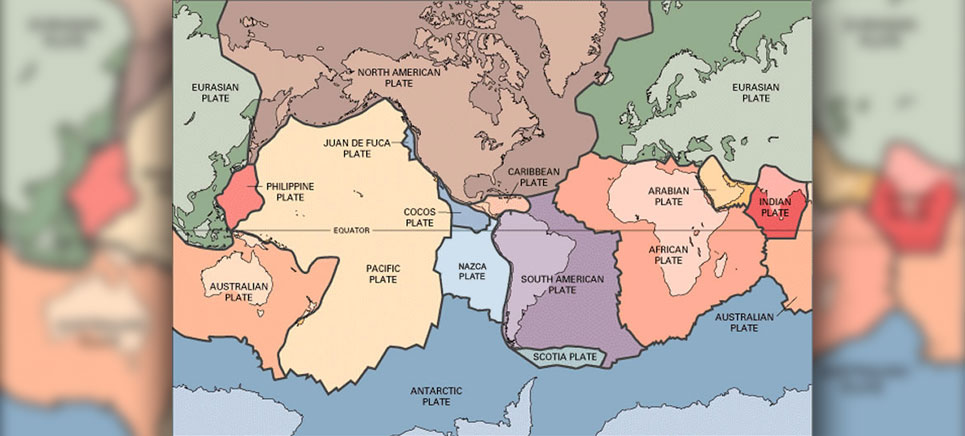Plate Tectonics is considered to be one of the most important theories of modern geology. The theory deals with the dynamics of the lithosphere. It is a revolutionizing theory that developed a uniform understanding of the processes of mountain formation, eruption of volcanoes, origin of earthquakes as well as reconstruction of past continents and oceans.
History of the Development of the Plate Tectonics Theory
Any new theories are built upon the existing theories and the theory of plate tectonics was no exception. Several pre-existing theories helped in the formulation and development of the theory of plate tectonics.
Following are some of the major developments that became a base for the plate tectonics theory.
- Mid-Oceanic Ridge and seafloor spreading
- Palaeomagnetism
- The findings regarding the age of oceanic floors
- Precise documentation of seismic and volcanic events
- Discoveries of island arcs and submarine trenches
The Theory of Plate Tectonics
The “Father of Plate Tectonics”, Alfred Wegener, a German geophysicist, proposed “Continental Drift” in 1912 which formed the basis of the current theory. The theory of plate tectonics was formulated in the 1960s. This theory says that the rigid outer layer of earth, called the lithosphere, floats on a semi-molten layer called the asthenosphere. According to the theory, the rigid outer part of the earth is broken up into seven major plates and several minor plates. These plates move relative to each other and interact along their boundaries where they either converge, diverge or slip past one another. This movement is really slow, typically 2-4 inches per year. These slow movements over millions of year result in significant changes in the earth’s geography.

Plates are divided as major and minor depending on their size. Similarly, the tectonic plates are classified as continental plates and oceanic plates depending on whether continent or ocean covers the major portion of the plate.
(Note: No tectonic plate is fully continental or fully oceanic. Only the proportion differs)
The Tectonic Plates
The seven major tectonic plates are –
- North American Plate
- South American Plate (smallest)
- African Plate
- Antarctica Plate
- Indo-Australian Plate
- Eurasian Plate
- Pacific Plate (largest)
In addition to these seven major tectonic plates, there are several minor plates including the Caribbean, Cocos, Bismarck, Fiji, Somalian, Nazca, Arabian etc.
The Force Behind the Movement of the Plates
Intense heat is generated in the mantle due to the radioactive decay deep inside the earth. When the resultant magma and gases seek to escape through the mantle, it produces a strong convectional current. These convectional current produced due to the upwelling of magma are the force that causes the plates to uplift and stretch.
However, the pace of movement of plates varies significantly depending on other factors such as normal and reverse magnetic fields.
The Plate Boundaries
The plate boundaries or the plate margins are the most important part of the plate tectonic theory. The major tectonic activities occur mostly along these plate margins. Depending on their way of interaction the plate boundaries or the plate margins are divided into three categories – Convergent Plate Margins, Divergent Plate Margins and Conservative or Transform Plate Margins.
- Convergent Plate Margin – Where two plates move towards one another and result in a collision. These are also called destructive plate margins.
- Divergent Plate Margin – When two plates move away from each other, they form a divergent plate margin.
- Transform or Conservative Plate Margin – When two plates slide past one another, they form the transform plate margin.
Use the citation below to add this article to your bibliography
"Theory of Plate Tectonics: Summary, Map and Major Plates." Dashamlav.com. Web. 13 June 2025. <https://dashamlav.com/theory-plate-tectonics/>
Dashamlav.com, "Theory of Plate Tectonics: Summary, Map and Major Plates." Accessed 13 June 2025. https://dashamlav.com/theory-plate-tectonics/
"Theory of Plate Tectonics: Summary, Map and Major Plates." (n.d.). Dashamlav.com. Retrieved 13 June 2025 from https://dashamlav.com/theory-plate-tectonics/
